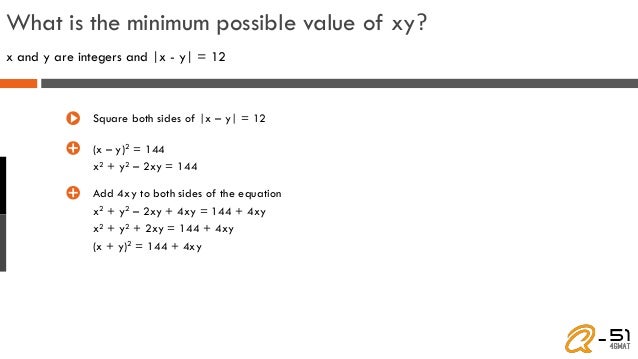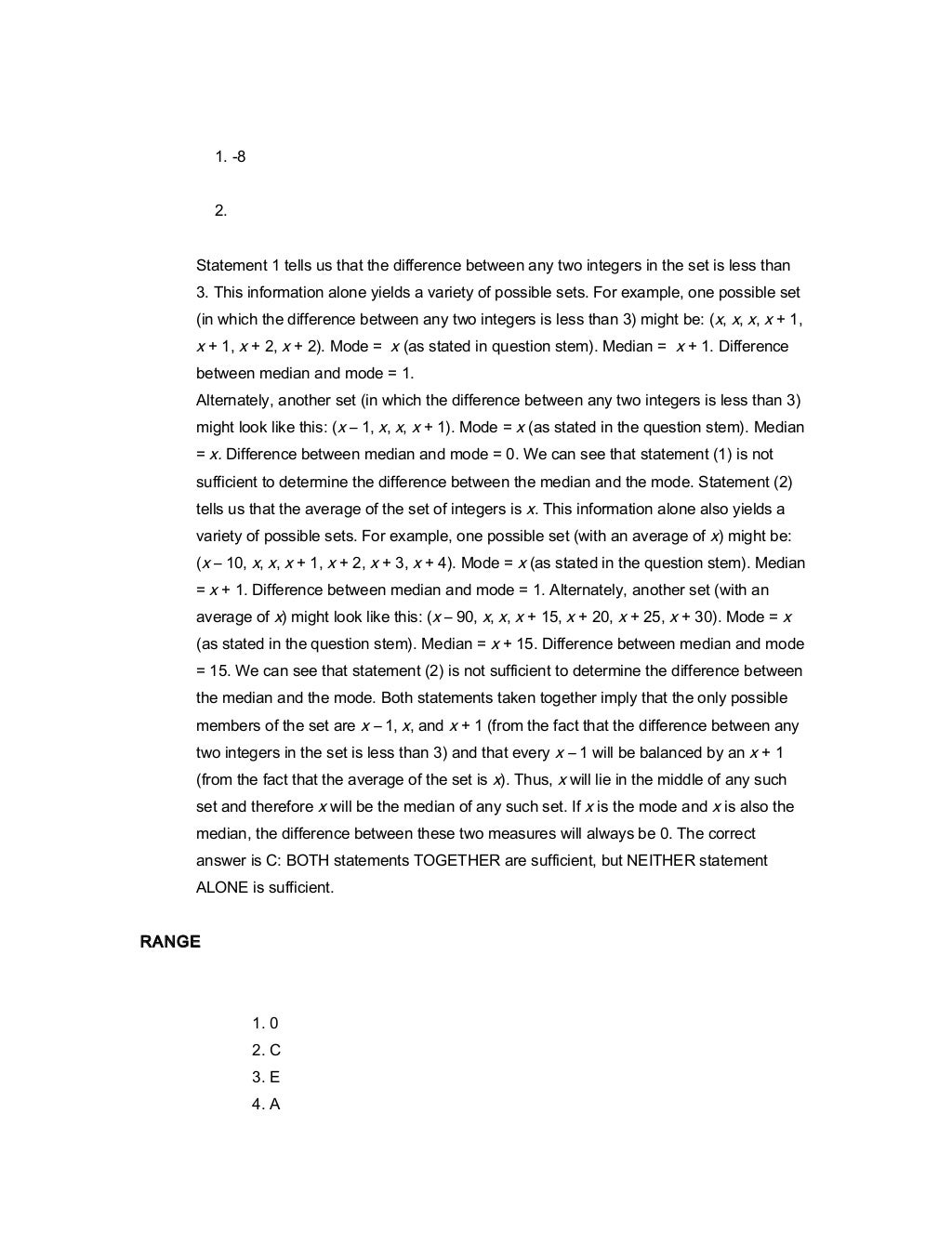

We will begin by analyzing the question: it is possible to write the question as an equation: 150Q+75W=?
Gmat quant questions windows#
What is the total cost of the windows and shelves that he bought?Īs aforesaid, in DS questions, we don't need to provide an answer to a question, but rather determine if there is enough information to answer it.
Gmat quant questions how to#
The following flowchart shows how to start solving DS format questions in the GMAT:Īn example of a Data Sufficiency problem in the quantitative section of GMAT:Ī store owner bought Q windows at a price of $150 per window and W shelves at a price of $75 per shelf. Therefore it's very important to work methodically and thoroughly when solving DS questions in the GMAT. (E) Statements (1) and (2) taken together are not sufficient to answer the question, and additional data are needed to answer the question.Īs you can see, this format adds additional challenges to the subjects on which the questions are based. (D) Either statement by itself is sufficient to answer the question. (C) Statements (1) and (2) taken together are sufficient to answer the question, even though neither statement alone is sufficient.

(B) Statement (2) ALONE is sufficient to answer the question, but statement (1) ALONE is not. (A) Statement (1) ALONE is sufficient to answer the question, but statement (2) ALONE is not. In this format the answer choices are invariable. We will need to determine if the information in this data allows us to answer the question. We will then be provided with two statemens containing data and additional information. In this kind of problem, we are presented with a question that there is no way of answering. We have to choose one of the answer choices that provides a solution to the question. This is the well known format, in which a calculation question is presented.

In each subject, the questions in the quantitative section of the GMAT can be presented in one of two formats: Problem Solving or Data Sufficiency. Question formats in the quantitative section: The precise number of questions from each subject can vary between the tests. The following chart shows a map of the question types in the quantitative section of the GMAT: Most of the difficult questions are more similar to logic riddles than to regular mathematics problems. The difficulty in the GMAT stems from the complex wording of the questions. Beyond these abilities, in order to succeed in the test, you need to show good logical and analytical skills. The quantitative GMAT test requires intermediate quantitative skills.


 0 kommentar(er)
0 kommentar(er)
